by M.K. Gandhi
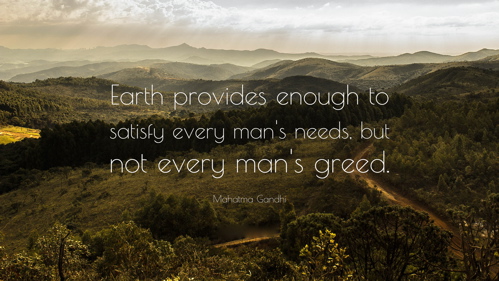
Poster art courtesy quotefancy.com
Editor’s Preface: This is the text of a speech, which Gandhi delivered in 1916. It is increasingly being cited as a key statement of his economic philosophy, most recently by Anthony J. Parel in his influential study, Gandhi’s Philosophy and the Quest for Harmony (Cambridge: Cambridge University Press, 2006, p. 81). It continues our series of making available important documents by Gandhi that we see increasingly cited in the literature. Please click on Gandhi’s byline above for easy access to our other postings, and please also see the Endnotes, and the note on the text, for acknowledgments and further information. JG
‘Does economic progress clash with real progress?’ When I accepted Mr. Kapildeva Malaviya’s invitation to speak to you upon the subject of this evening, I was painfully conscious of my limitations. (1) You are an economic society. You have chosen distinguished specialists for the subjects included in your syllabus for this year and the next. I seem to be the only speaker ill fitted for the task set before him.
Frankly and truly, I know very little of economics, as you naturally understand them. Only the other day, sitting at an evening meal, a civilian friend deluged me with a series of questions on my crankisms. As he proceeded in his cross-examination, I being a willing victim, he found no difficulty in discovering my gross ignorance of the matter. I appeared to him to be handling with a cocksureness worthy only of a man who knows not that he knows not. To his horror and even indignation, I suppose, he found that I had not even read books on economics by such well-known authorities as Mill, Marshall, Adam Smith and a host of such other authors. (1) In despair, he ended by advising me to read these works before experimenting in matters economic at the expense of the public. He little knew that I was a sinner past redemption. My experiments continue at the expense of trusting friends. For, there come to us moments in life when about some things we need no proof from without. A little voice within us tells us, ‘You are on the right track, move neither to your left nor right, but keep to the straight and narrow way.’ With such help we march forward slowly indeed, but surely and steadily. That is my position.
Read the rest of this article »
by Gertjan Cobelens
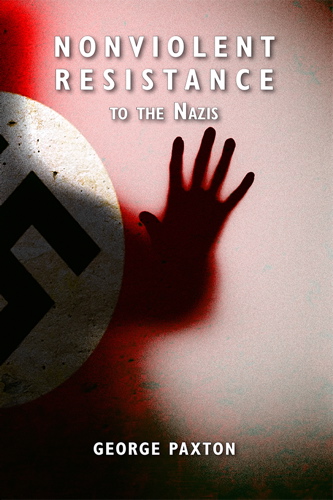
Dustwrapper art courtesy youcaxton.co.uk
But what about World War II? It is considered the ultimate trump card in any debate on the effectiveness of nonviolent resistance. Not entirely by accident, it is also the title of an IFOR brochure on this very question. (1) It was President Obama’s main defense for his justification of the use of force in his acceptance speech of the Nobel Peace Prize. It was one of the main stumbling blocks for Martin Luther King Jr. towards embracing nonviolence, and it is the standard reaction of most people involved in government and the military to suggestions of implementing forms of nonviolent civil defense. The implication, of course, is that the Nazi regime was so violent and abhorrent that it could only be stopped by brute force. The other side of the coin, though, is that if one could argue successfully that some forms of nonviolent resistance did prove viable during WWII, it would follow that these strategies would be effective under most circumstances.
That was what the War Resisters’ International set out to demonstrate when, in 1952, they embarked on the idea to put together a book on accounts of nonviolent resistance. Although the WRI succeeded in amassing some first-class examples, the amount of material collected was deemed insufficient to be published as a book. (2) Others followed suit, such as Gene Sharp in his 1958 Peace News Pamphlet Tyranny Could Not Quell Them, in which he detailed the successful non-cooperation campaign by the teachers of Norway, and Jacques Sémelin’s Unarmed Against Hitler: Civilian Resistance in Europe 1939-1943. (3).
Read the rest of this article »
by Richard B. Gregg
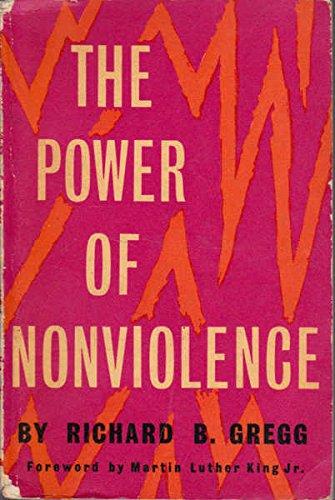
Dustwrapper art, 1960 James Clarke & Co edition, courtesy abebooks.com
Editor’s Preface: Richard Gregg (1885-1974) is often credited with being the first American theorist of nonviolent civil resistance (satyagraha). While a student at Harvard in the early 1920s he attended a guest lecture about Gandhi and Gandhi’s nonviolence theories. Upon graduating in 1925 he set sail for India, and lived for several years in various Gandhian ashrams. In 1934 he published the work he is best known for, The Power of Non-violence. The book was to have a great influence on Martin Luther King, Jr. and other of the civil rights leaders, and has remained an essential text in the study of nonviolence, and the influence of nonviolence on American politics. Gregg’s Wikipedia page deserves expanding, but has, nonetheless, some useful links. The Quaker website quakersintheworld.org also has a brief biography. This article is dated c. 1963. Please see the note at the end for acknowledgments, and further textual details. JG
On the faculty of the University of Wisconsin there is a psychiatrist, Dr. Carl R. Rogers, who has spent years giving counsel to those who are in personal emotional or mental trouble and cannot seem to solve their problems unaided. As a result of his professional experience he has come to believe that nobody will change his habits of thinking, feeling or acting until something happens to change his own picture or concept of himself. Other things being equal, for example, a student will give up preparing to become a journalist and begin to study for the law only when he can see himself as a practicing lawyer. A thief will abandon that way of life only if he can see himself as happier in a different way of life and know how he can attain it. For most people, the matter of self-regard is of primary importance.
Read the rest of this article »
by David M. Craig
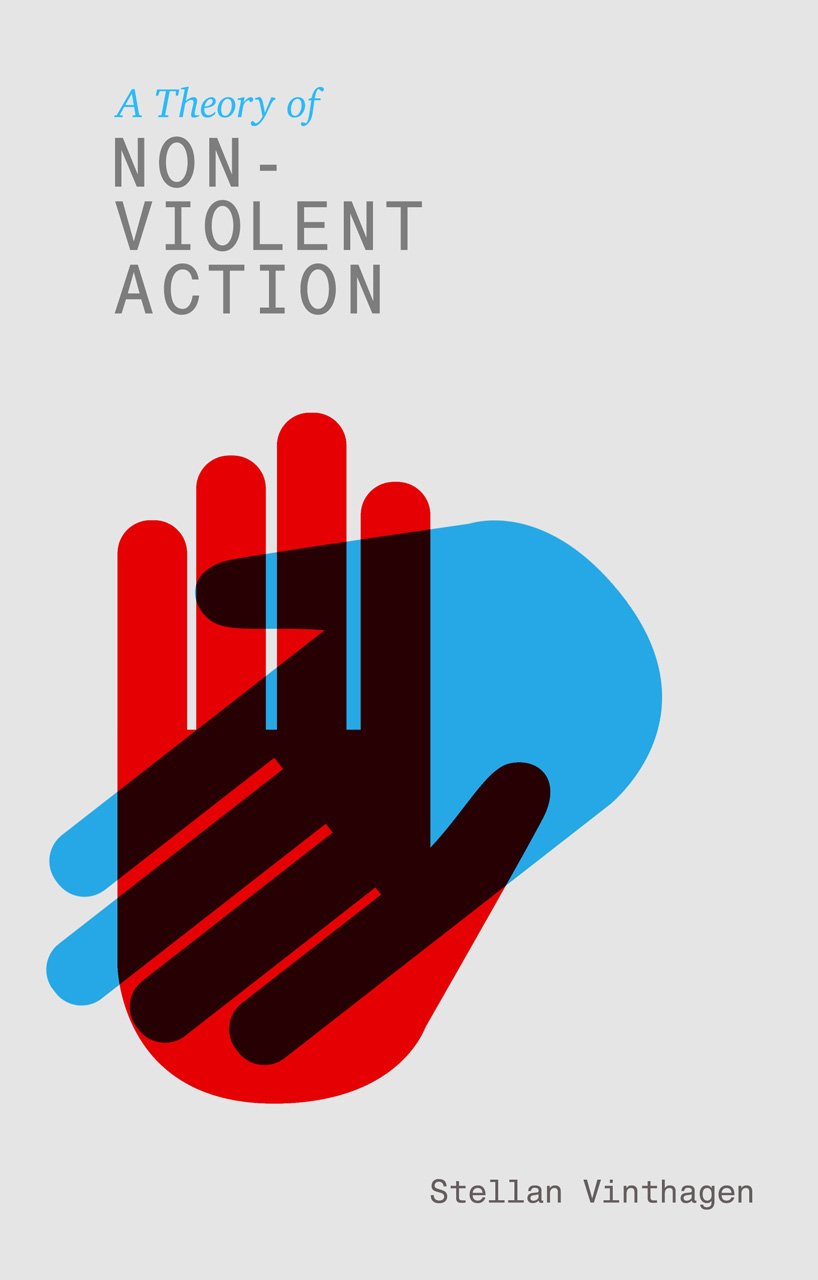
Dustwrapper art courtesy zedbooks.co.uk
Reflecting on the writer’s internal struggle between the sense of futility and the need to persevere, the American author F. Scott Fitzgerald described the “test of a first-rate intelligence [as] the ability to hold two opposed ideas in mind at the same time and still retain the ability to function.” (1) Stellan Vinthagen’s book, A Theory of Nonviolent Action: How Civil Resistance Works (London: Zed Books, 2015), passes a similar judgment on Mohandas Gandhi. Even if Gandhi resisted the “Great Soul” title of Mahatma, his genius included a capacious imagination and experimental creativity that not only embraced opposed ideas, but also put them into action simultaneously. Some of the contradictions in Gandhi’s nonviolence are familiar. His aspiration for spiritual purification could sometimes conflict with his political strategizing. The nonviolent resister’s opposition to oppressive rules and roles stands in tension with solicitude for the people who support and benefit from the status quo. Vinthagen multiplies the contradictions inherent in nonviolent action, interpreting them as “a creative tension, a dynamic that gives nonviolence its social ‘force.’” (Vinthagen, 321)
Vinthagen’s original contribution is to map out these tensions in a general sociological theory of nonviolent action. For Vinthagen, Gandhi is the primary source and theorist for all discussions of nonviolence, but he also draws Gandhi outside of his historical context and religious identity. A good illustration is Vinthagen’s disagreement over the role and significance of suffering in nonviolence. Gandhi links suffering (tapasya) to a Hindu ideal of renunciation. In his re-reading of Krishna’s advice to Arjuna in the Bhagavad-Gita, Gandhi exhorts everyone to follow the sannyasi’s practice of renunciation and always renounce the fruits of one’s actions. In place of personal goals, right action aspires to Truth. The clearest sign that devotion to Truth has displaced personal goals is a person’s openness to suffering even to the point of losing one’s life.
Read the rest of this article »
by Gertjan Cobelens
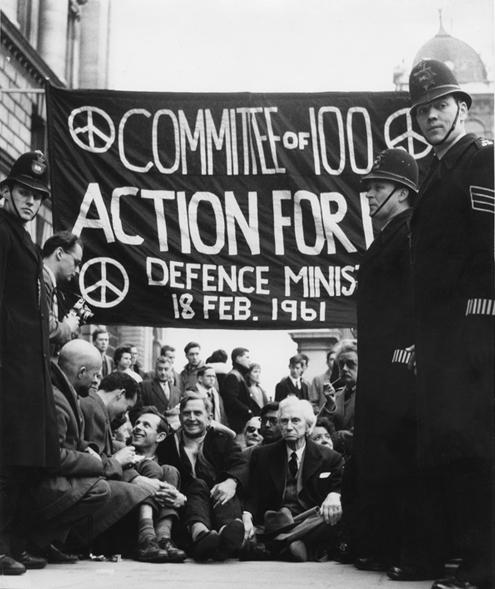
Bertrand Russell (right foreground) leads Committee march; courtesy peacebuttons.info
We are posting today (see below) three previously unpublished articles from the Committee of 100 archive, held by the IISG in Amsterdam, as part of our ongoing research into the early influence of nonviolence on the pacifist movements. During the summer of 1960, philosopher and activist Bertrand Russell was persuaded to resign his presidency of the Campaign for Nuclear Disarmament and assume the leadership of the Committee of 100, a newly planned movement for large scale nonviolent direct action against the manufacture and use of nuclear weapons. Together with Michael Scott, Ralph Schoenman, Michael Randle, April Carter and 95 other public signatories, 88-year-old Russell launched the Committee at a meeting in London on 22 October 1960. Its objective was to stop the “folly of nuclear armaments” through mass civil disobedience.
Right from the beginning the Committee of 100 strongly emphasized the nonviolent nature of the demonstrations, and anybody who wished to participate had to adhere to a long list of behavioral guidelines designed to safeguard the nonviolent integrity of the movement. Nevertheless, demonstrators expected to be arrested and charged and at the second of the sit-down demonstrations in April 1961 in London, over 800 people were arrested. That September, a week before the next mass demonstration, all one hundred committee members were summoned to court without charge for incitement to commit breaches of the peace. They were asked to sign a promise of good behavior for twelve months, but 32 refused, including Bertrand Russell, who opted to go to jail instead. The September demonstration was the largest organized by the Committee. Between 12,000 and 15,000 demonstrators flooded into the center of London, and more than 1,300 were arrested.
Read the rest of this article »
by Peter Cadogan
Aims: To ban the bomb. To prevent World War III. To rid the world of the power of militarists and military alliances. To understand the causes of war and to work out how to eliminate them. To identify the particular people, interests and factors making for World War III.
In face of the threat of war to alert people in Britain and throughout the world to the necessity of building a new kind of national and international movement against war. To achieve our purposes by direct action, without violence and by civil disobedience when need be. To give incidental support to conventional methods of opposition.
Read the rest of this article »
by the London Committee of 100
The London Committee of 100 is a body formed to organise mass nonviolent resistance, including civil disobedience, to nuclear and other weapons of mass destruction. This is a nonviolent demonstration. If you feel that you are not capable of remaining nonviolent in the circumstances of the demonstration, we would ask you not to take part. If at any time during the demonstration you feel that you are going to become violent, we would suggest that you leave the demonstration, at least for the time being.
Read the rest of this article »
by National Committee of 100
Despite the dangers of nuclear tests and the possibilities of nuclear war, we believe that there is hope. Despite the obstacles, we believe that:
- Men are capable of sanity and courage;
- Men can be moved to action to preserve life;
- Effective action is possible.
Read the rest of this article »
by Ken Butigan

Logo of Pax Christi International, courtesy www.paxchristi.net
Editor’s Preface: We are posting today three interrelated articles about the remarkable Vatican conference concerning nonviolence and just peace, including this essay by Ken Butigan, Pax Christi International’s statement, and Pope Francis’s greeting to the conference members. The theory of “just war” has been the prevailing Church doctrine since postulated by Saint Augustine in the 4th century (CE). There have been previous attempts to redefine or challenge it, most notably Vatican Council II’s statement condemning war (mentioned in Pope Francis’s article below) and Thomas Merton’s many essays on nonviolence and pacifism, especially those collected in Passion for Peace: The Social Essays, (New York: Crossroad, 1996). In the lead essay from that volume, “The Root of War is Fear”, written in 1961 for The Catholic Worker, Merton writes that the “duty of the Christian . . . is to do the one task which God has imposed upon us in the world today. That task is to work for the total abolition of war.” But nuclear weapons signify a new reality demanding new paradigms. This conference engages the struggle. JG
The atmosphere of an unprecedented gathering on nonviolence at the Vatican — where change-makers from every part of the globe deliberated with priests, bishops and the Catholic Church’s top officer for justice and peace — was electric from beginning to end.
Read the rest of this article »
by Pax Christi International
As Christians committed to a more just and peaceful world we are called to take a clear stand for creative and active nonviolence and against all forms of violence. With this conviction, and in recognition of the Jubilee Year of Mercy declared by Pope Francis, people from many countries gathered at the Nonviolence and Just Peace Conference sponsored by the Pontifical Council for Justice and Peace and Pax Christi International on April 11-13, 2016 in Rome.
Read the rest of this article »










